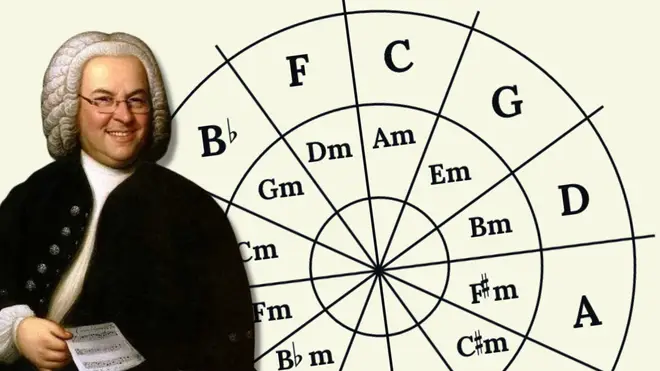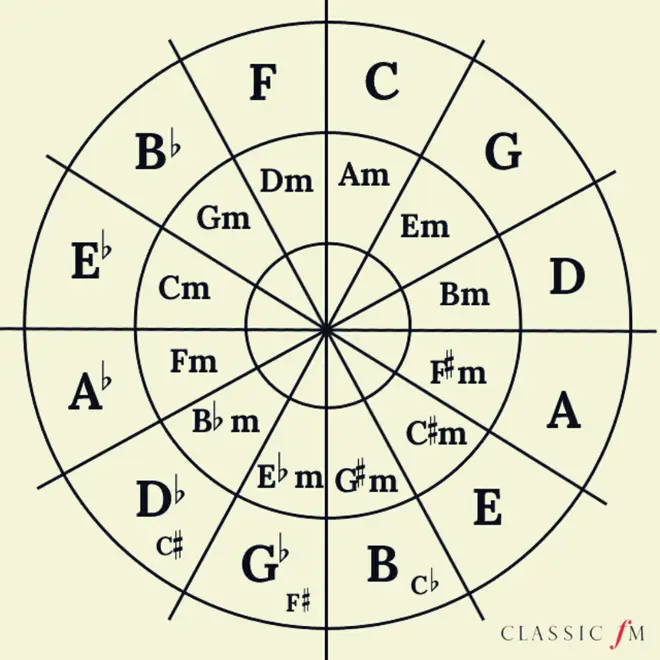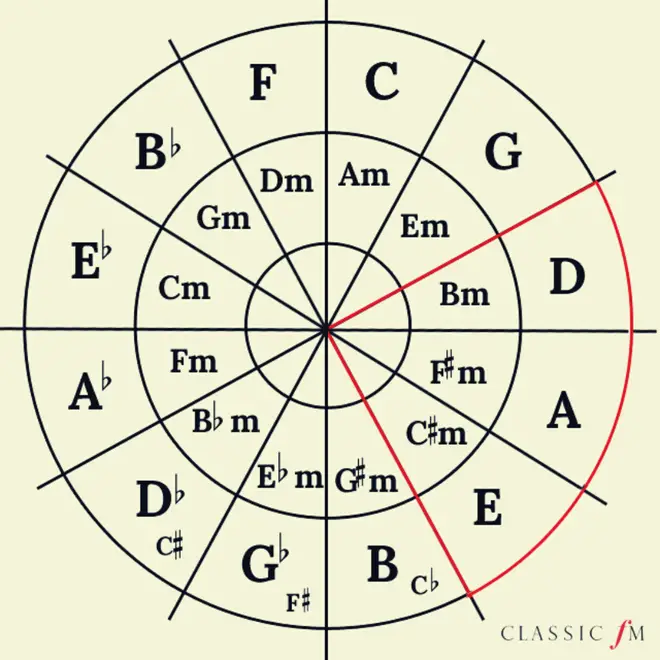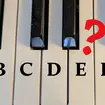What is the circle of fifths?
17 October 2023, 23:02

It’s on the wall of every music room in the country, and it can be quite daunting if you don’t know what you’re looking at. But don’t panic: the Circle of Fifths is as elegant and beautiful as the musical relationships it describes.
Listen to this article
So, where did the Circle of Fifths come from? It all started out (probably) with Pythagoras in 600BC.
The story says that the Greek philosopher had been experimenting with different lengths of vibrating string and had discovered the relationships between pitch frequencies.
In his experiments he also defined exactly what an octave was, and divided it up into 12 half-steps. This became known as the Pythagorean Circle.
The Pythagorean Circle was the grandaddy of the Circle of Fifths. Different revisions and improvements were made by Nikolay Diletsky in the 1670s, and Johann David Heinichen in 1728, until finally we reached the version we have today.
It’s something used by all classical composers from Johann Sebastian Bach until today, jazzy improvisers, and the writers of pop and rock hits.
Read more: Discover music theory

What is the Circle of Fifths?
There’s a tonne of information packed into the Circle of Fifths, but it principally shows a map of keys. Starting at the top with that white-note piano favourite C major and moving clockwise, the adjacent keys are the most similar to each other; the only difference between C major and G major is the addition of an F sharp, and to get to the next key, D major, you just add a C sharp.
As you go round the circle clockwise you keep adding sharps, until you get to C sharp major, which has a whopping seven sharps. Counter-clockwise you keep adding flats, right the way round to the heavily be-flatted C flat major. Cool, huh?
Read more: What are the keys in music?

The Circle of Fifths - How to Actually Use It
But that’s not all...
The Circle of Fifths also has a nifty way to tell you exactly which those accidentals are. And nestled snugly inside the major circle you find the relative minor keys – which have all the same accidentals as their major counterparts.
The harmonic magic of the Circle of Fifths
Chords I, IV and V are often the building blocks of so much music, and famously the foundation of so many pop songs.
The Circle of Fifths can help you figure out these strong chord progressions in any key, and also equips you to create your own chord progressions by experimenting with different patterns.
The layout groups the six diatonic chords of each key together in one area. It means you can make up a song immediately in any key just by looking at the chart.
Read more: Could you pass Grade 5 music theory? Try our quiz!
For example, let’s choose the key of A major...

Because of how the circle is arranged, Chord V (E) and Chord IV (D) can be found immediately to either side. So far so good.
But there’s more: the other three diatonic chords in the key are also right there in the smaller ‘relative minor’ circle: Chord II (B minor); Chord VI (F sharp minor); Chord III (C sharp minor).

8 Facts About the Circle of Fifths that you May Not Already Know
If these harmonies are the building blocks of music, the Circle of Fifths is a handy instruction manual that helpfully shows you how things can be put together.
Now you see why your music teacher was so quick to put that poster on your classroom wall, right?


























